When the world seems broken, it’s easy to feel broken with it.
Maybe you’ve been in solitary confinement with your thoughts for days and weeks.
Maybe you’re out in the world but fearful that the wrong action can bring unthinkable consequences. It’s no wonder worry and anxiety can slip into your psyche and refuse to leave.
In the dark times, when you’re overwhelmed with events you can’t control, it feels that it might be easy for your mental health to spiral downward. And if you’ve struggled with mental or physical health issues before (and who of us haven’t?), how can you ride this almost perfect storm of global uncertainty?
Be calmed. Be soothed. It’s ok.
Because you’ve already grabbed that lifeline.
You’re already healing and strengthening your mental health
You’re already letting in wellness.
The secret is your creative practice.
Your creative practice is a pathway to emerging mentally healthier than before. Your practice has the power to soothe, to comfort and to strengthen you.
Creative practice is therapy. You have the power to improve your mental health, stitch by stitch. And that’s powerful to know, right?
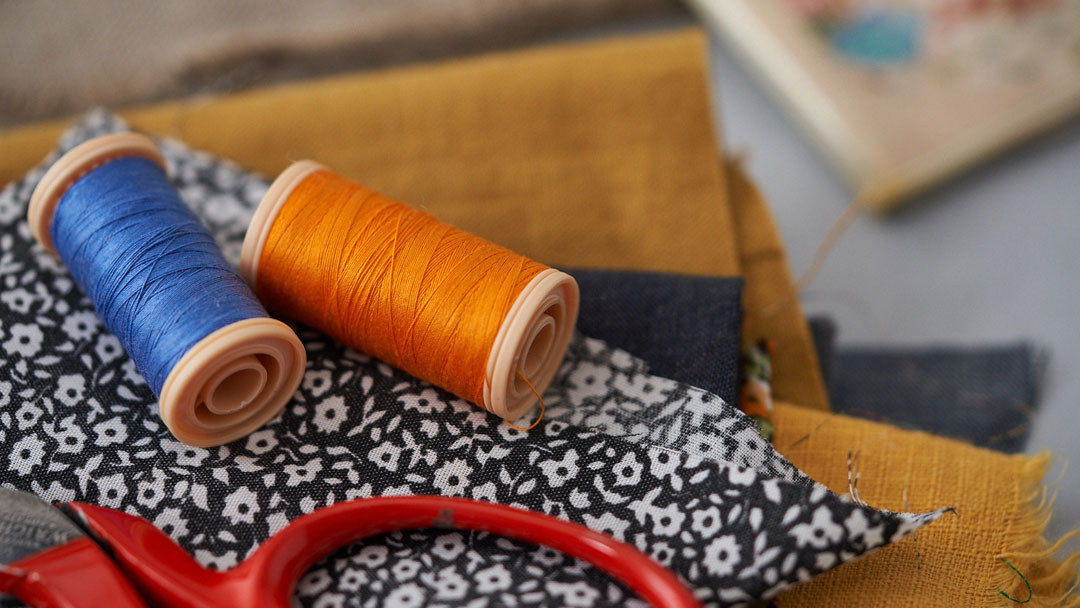
Your brain on textile art
Making things makes things better. And it makes things better than you think.
Yes, your practice can soothe you and bring you through the dark times, but purposeful, regular practice can also power up your mental health.
It’s just science.
Here’s how: The lizard, the mouse and the monkey
Your brain has evolved over millions of years, and, as beautifully described by neuropsychologist Rick Hanson, has three main parts:
Your lizard brain: Your lizard brain is your brain stem, the most primitive part of your brain. All your lizard brain wants is to feel safe.
Your mouse brain: This is your limbic system. All your mouse brain wants is to be nourished.
Your monkey brain: This is your cortex. All your monkey brain wants is to feel connected.
For good mental health, you need to stroke the lizard, feed the mouse and hug the monkey.
How can threading a needle and making some marks lighten the load?
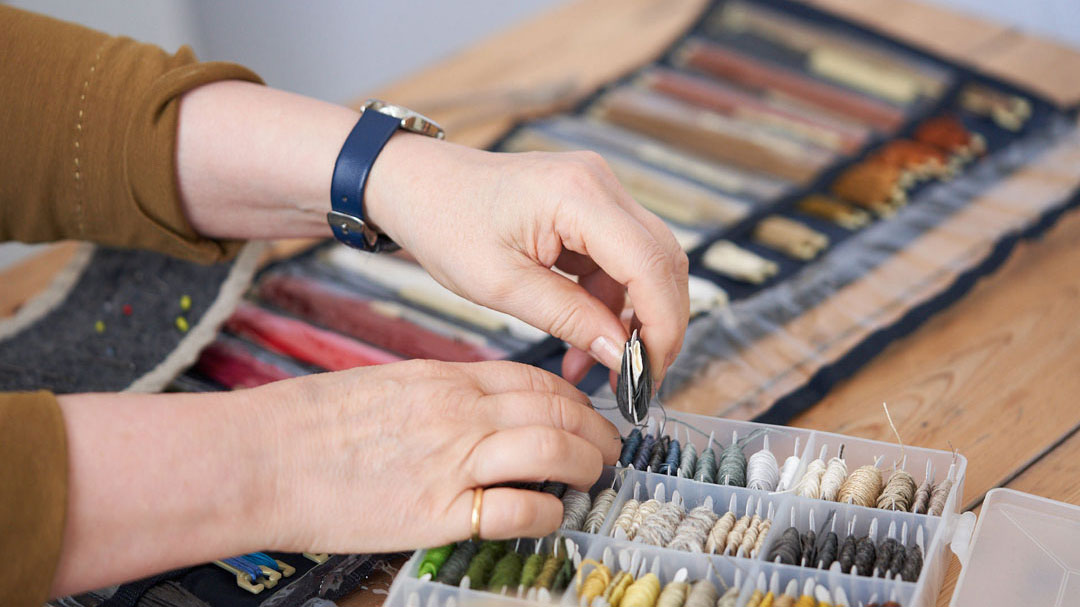
1. The power of intention
When you decide to create a new piece, or just play around with thread for half an hour, you’re making a goal-directed decision. And when you make a decision, you feel more in control. You’re learning to have agency.
Decision made, your focus narrows, irrelevant details and distractions dissolve and your brain stem calms (you’re stroking the lizard).
Taking that tiny decision – to hunt down that yarn, to try straight stitch instead of something fancy – makes you better at decision making. And this, slowly but surely, improves your confidence and mood.
When you focus on making, you’re taking the decision to practice self-care and self-compassion. You’re on your own side.
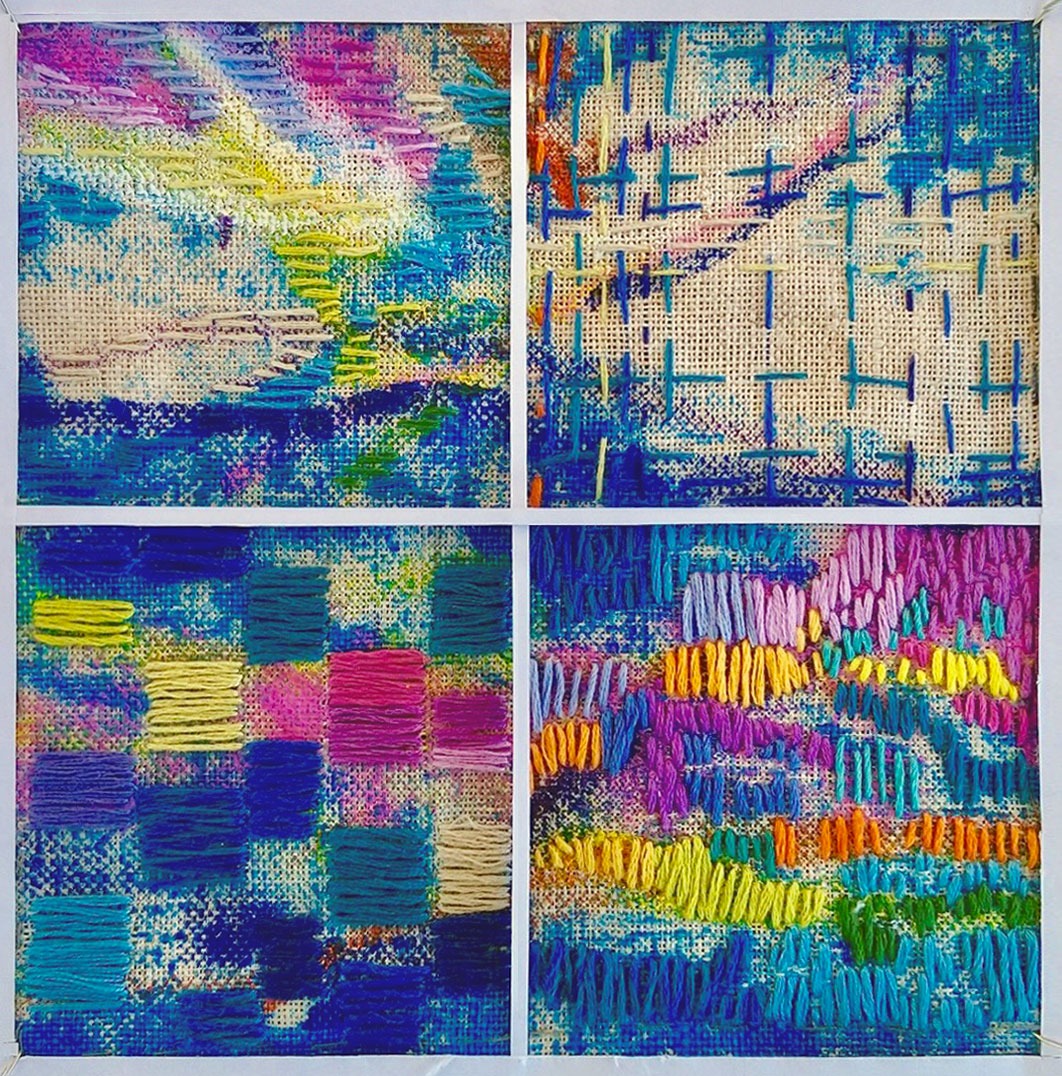
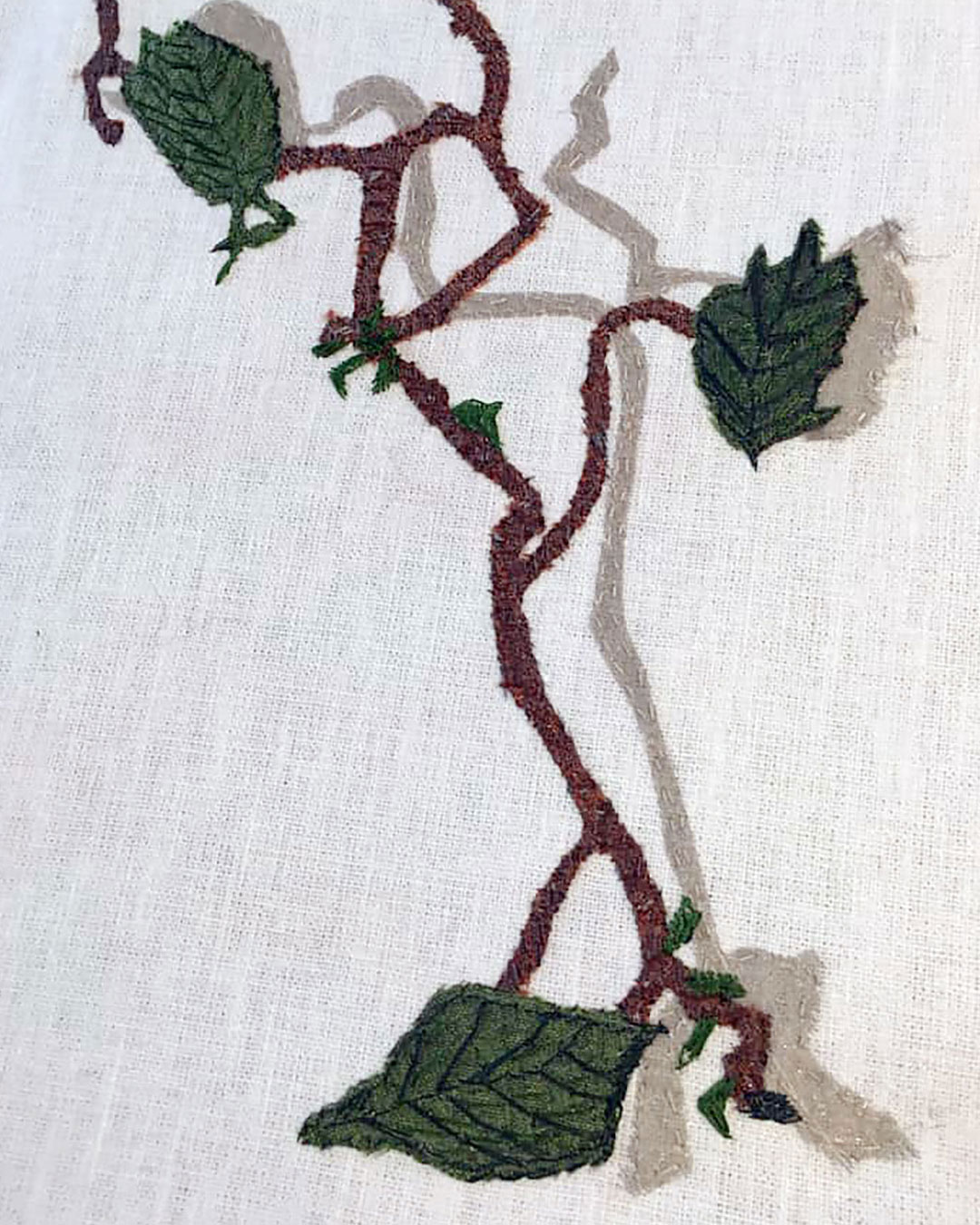
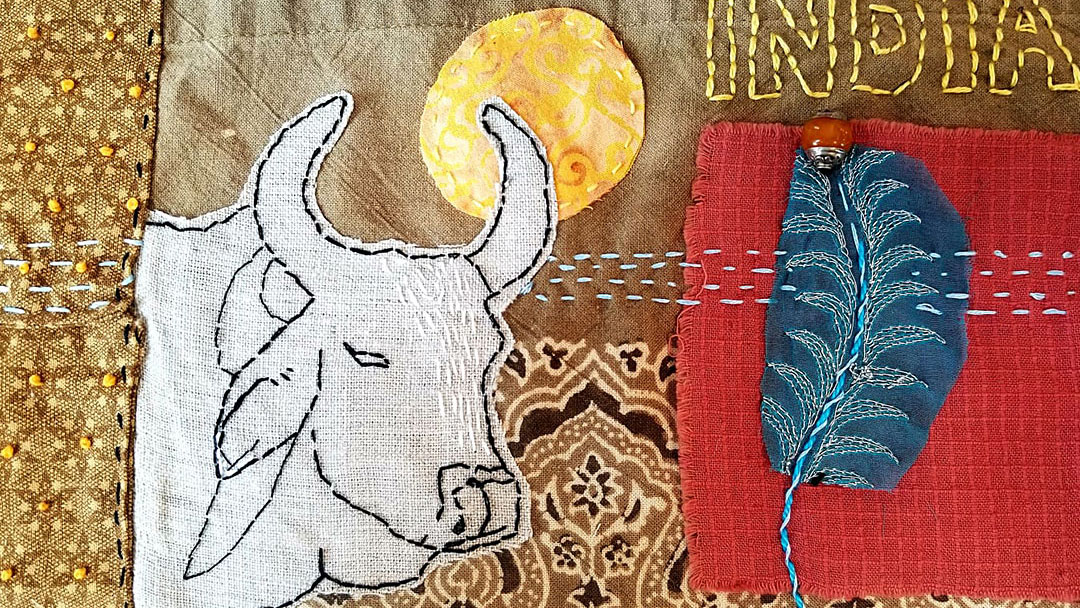

2. Creative practice as respite
Teresa Valverde and her family live in Spain and had 35 days of strict lockdown – even a walk outside wasn’t allowed. She says, “Cooped up in the house, trying to work online, while doing our best to homeschool two adolescents got very difficult. But when things get anxious, I retreat for a while into a world of colours, threads and fabrics.”
Creative practice is your safe space. It’s a refuge of calm and quiet, hidden away from the noisy world outside – and inside.
As you focus solely on what you’re doing, the shrill voice of your inner critic is silenced and you get a break from those old stories you’re telling yourself. You’re choosing where your attention goes, rather than let it run on automatic pilot.
Alison Wyatt’s creative practice, through the free TextileArtist.org Community Stitch Challenge, gave her respite from her own lockdown, which started in November 2019 with surgery for breast cancer. She says, “This has been a life saver for me. It’s allowed me to escape the “real” world on a temporary basis.”
Barbara Daly was caring for her 93-year-old mother when her son was rushed to hospital. Her creative practice saw her through. Barbara says, “For one hour a day, I got to focus on complete self-care instead of what was going on on the outside. It was the greatest gift I could have given myself.”
Anxiety can’t compete with attention.
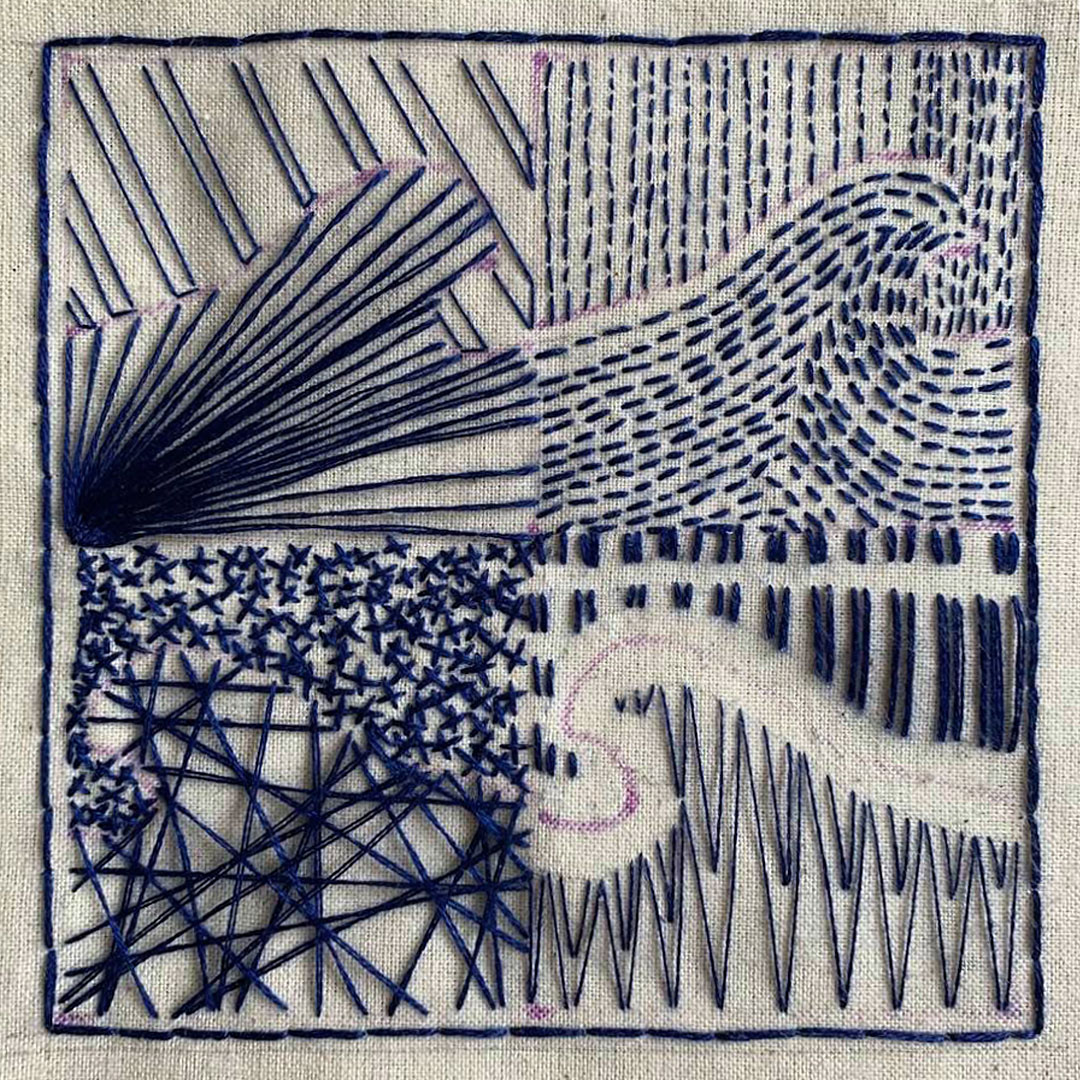
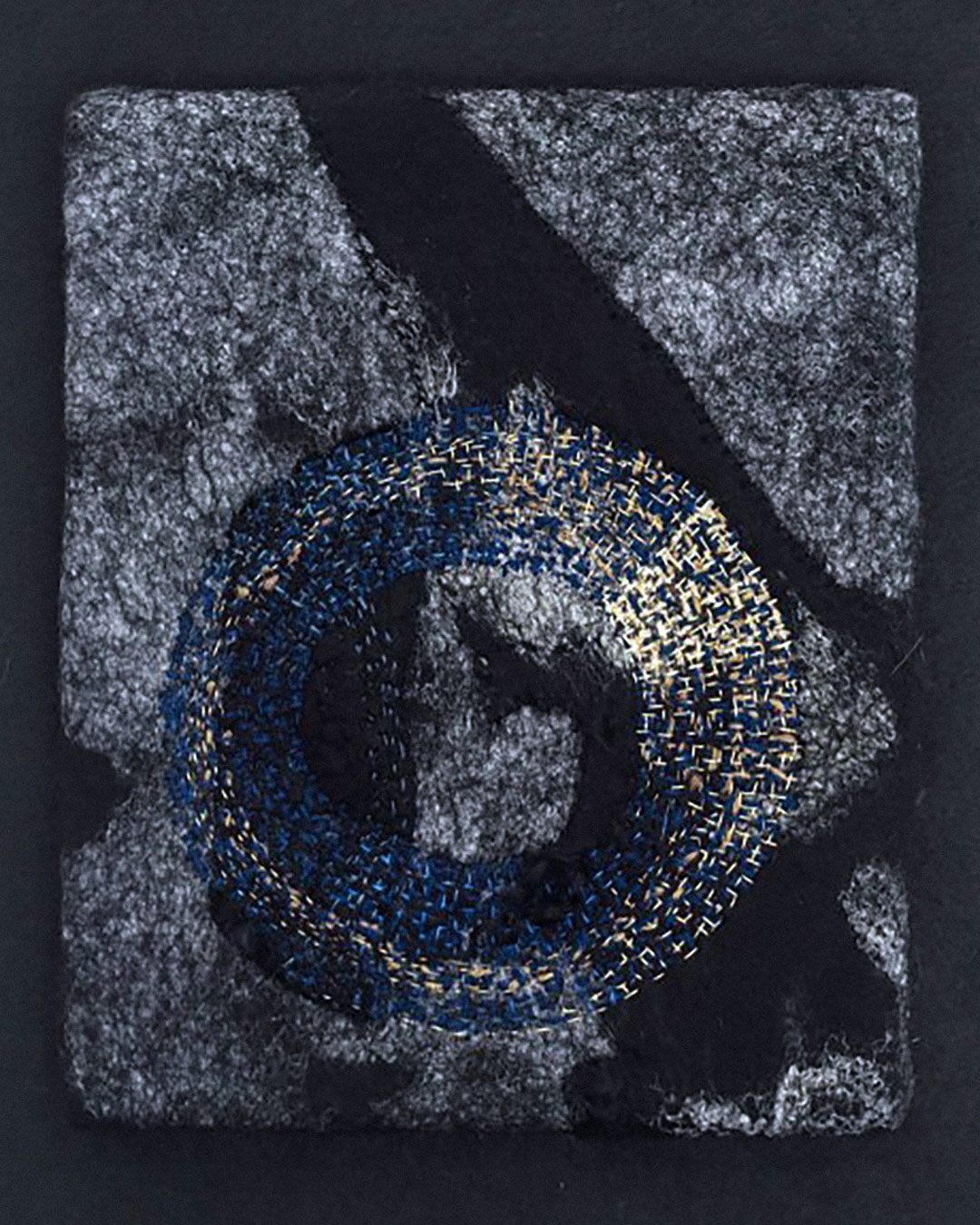
3. Creative practice as meditation
When you’re focussed on your stitching, when you’re in the rhythm of making, only now exists. There is only the present. The past has fallen away, and the future disappears. And when you’re paying attention to the present, you’re practicing mindfulness.
“Stitching is like my yoga practice.”
Gregory Todd Wilkins
Your practice is contemplative. It’s meditation in movement, your hand and mind in perfect harmony and, as you stitch, you gain the benefits. There are hundreds of scientific studies that suggest a mindfulness practice can have positive mental and physical effects, and it’s especially effective in reducing stress, anxiety and depression.
“In the chaos lies the calm.”
Armande France
As you stitch, your breathing slows and this tells your brain “Everything’s ok. There’s no danger.” You’re deactivating your brain from red alert to amber to green. You’re self-soothing.
For artist Joke Lunsing, hand-stitching has become a means of practising mindfulness. She says, “It allows me to be focused and calm. I love being in the bubble I create when I’m hand-stitching.”
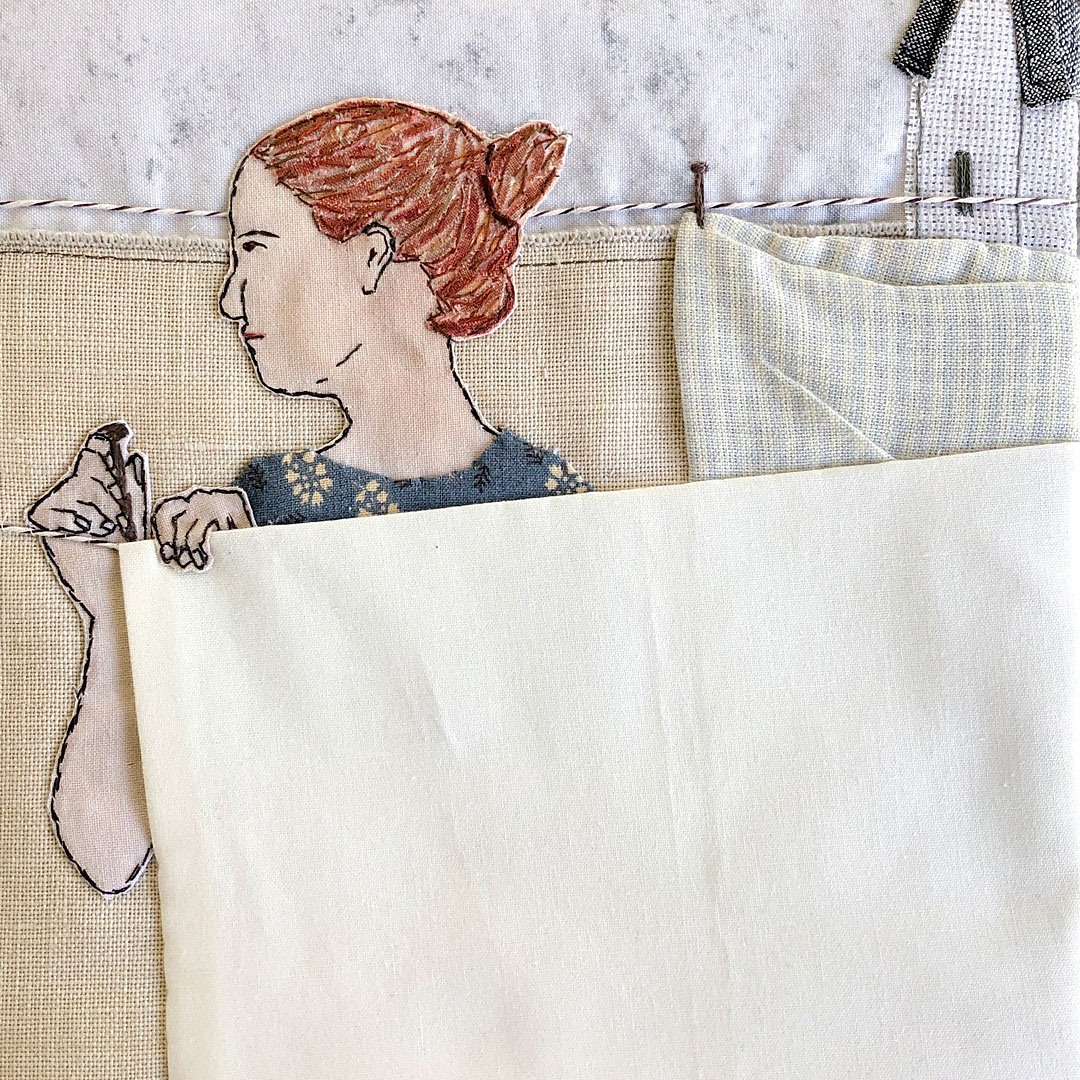
4. Creative practice as nourishment
When life is extra hard, we all need a break – not just from the difficulties, but a break that gives us nourishment and the strength to get up and get going again.
Your creative practice does this. It feeds the mouse (your limbic system), which is looking for nourishment and reward.
When you’re experimenting with colour and fabric; when you’re playing with that weird stitch that you haven’t got quite “right” yet, when you’ve gained the satisfaction of completing that challenge, you feel nourished.
Nourishment can take many forms: the satisfaction of learning how to properly back your work (and the effects of learning on your brain is a whole other article); the excitement of completing your first stitched portrait; the pleasure of your daughter’s delight when you present her with something you made for her.
It all counts. It’s all nourishment.
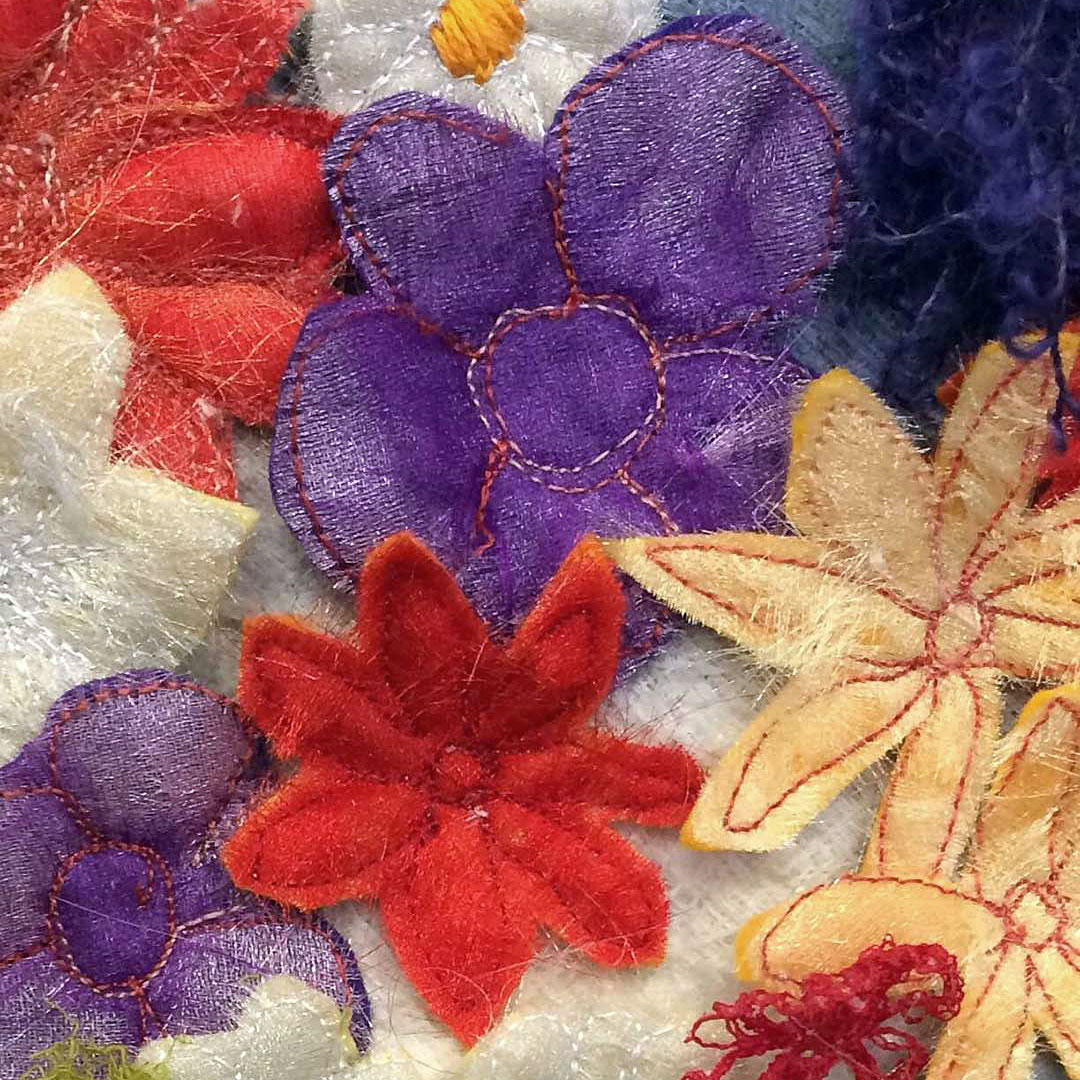
5. Creative practice as recovery
Creative practice is a way through dark times. It’s a path towards the light. It’s a safe space to weather the storms of our own emotions and anxieties as they rise and fall, or to work through the pain of loss, grief and fear.
2015 almost destroyed artist Mary Carson. She lost both her brother and her mother. She says, “During my ‘dark time’, I turned to slow stitching as a way to get out of my head and take a break from the sadness. Now that they’ve been gone for a few years, it still provides emotional support, but it’s also leading me to a new vocation as a textile artist.”
Textile artist Ami James has bipolar disorder type 1. The most stressful part of her condition is anxiety. She says, “Anxiety for me was a living nightmare. It triggered panic attacks, hallucinations and paranoia. My thoughts raced with negative and dark things. But when I took up hand stitching, my mind was still racing, but full of positivity instead. I had a mind full of fabrics, quilts, new equipment, and things I wanted to try.”
Ami found that her practice helped to stop the hallucinations, paranoia and low moods. “Sewing became some sort of a therapy for me. I would try and do something crafty every day. The changes in me didn’t go unnoticed – my family and friends all noticed. Learning new skills and techniques was also keeping me grounded and focused.”
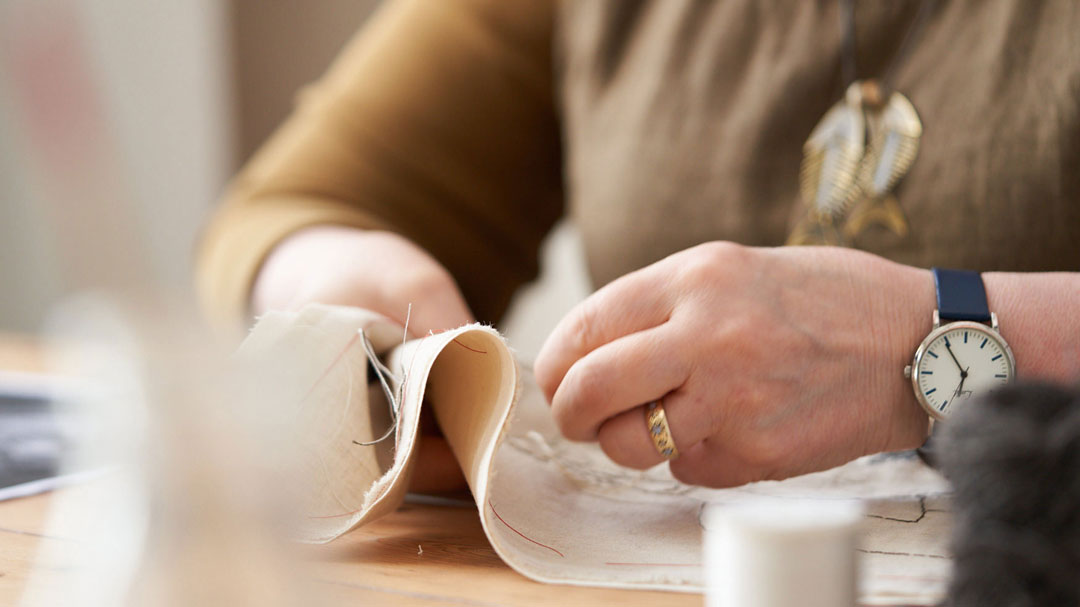
6. Creative practice as connection
We’re social animals. Even the most introverted of us gain from being connected with people who understand us, who want the same thing. When we connect, we’re rewarding our cortex. We’re hugging the monkey (remember her?).
An array of evidence shows us that positive relationships and shared activities contribute to our physical and mental wellbeing.
Making textile art is as much a traditionally shared experience as well as a solitary one. Think American quilting circles, sewing groups, the recent Community Stitch Challenge, where nearly 20,000 stitchers from around the world connected, created and chatted together.
We’ve been rewarded to discover how that feeling of connection has helped you and the other members of the TextileArtist.org community: how it has lifted spirits, encouraged progress and experimentation, and helped you learn new techniques and look at your work differently. You told us you felt heard, valued and supported.
The community aspect of creative practice has a powerful, positive impact on mental health.
Getting better, feeling better, being better
When you pick up your needle, you’re practicing a way of being that can change the way you think and feel for the better. With every stitch, you’re dispelling the negative and welcoming the positive into your life. And that’s a healing power that’s truly yours, ready for you at any time of the day or night.
Are you ready to find your calm through stitch?
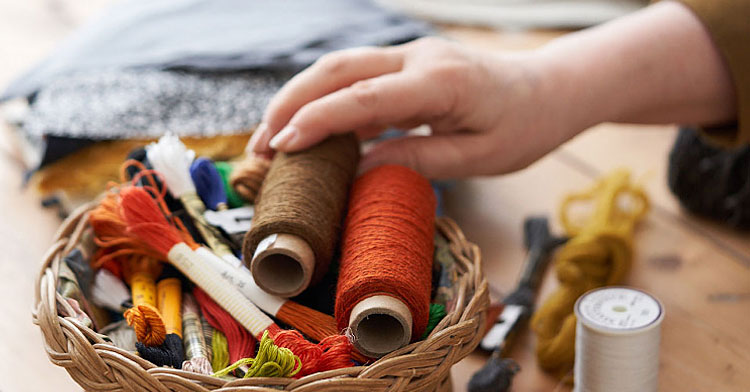

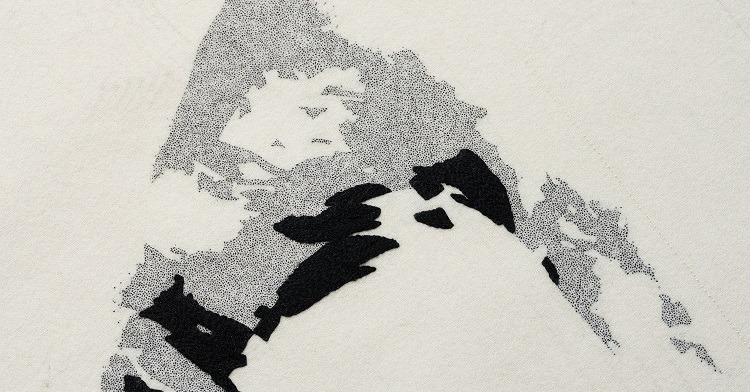
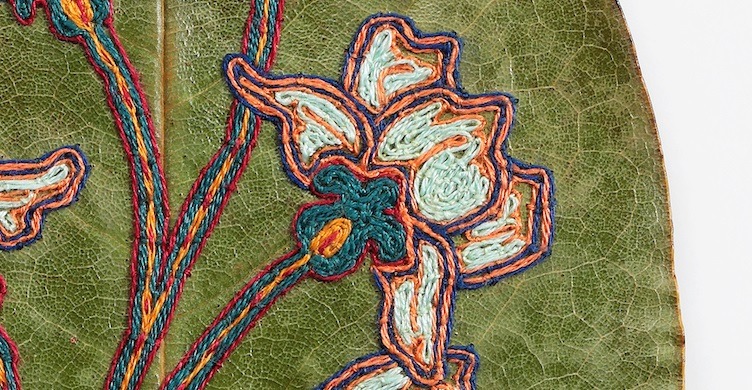
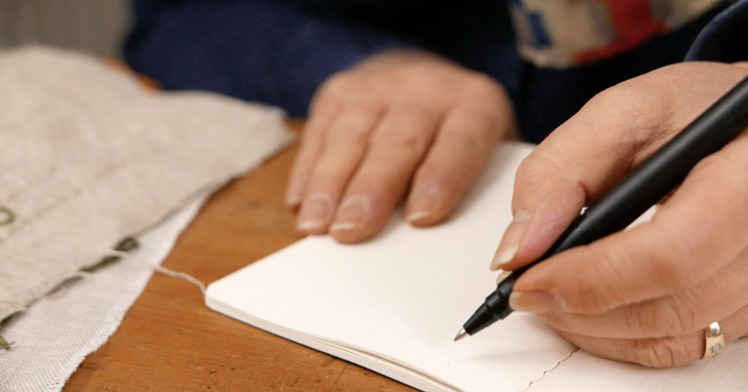
![Contemporary textile artist Lisa Soloman featured image||Lisa Soloman - Sen [1000 doilies]](https://www.textileartist.org/wp-content/uploads/Lisa.jpg)
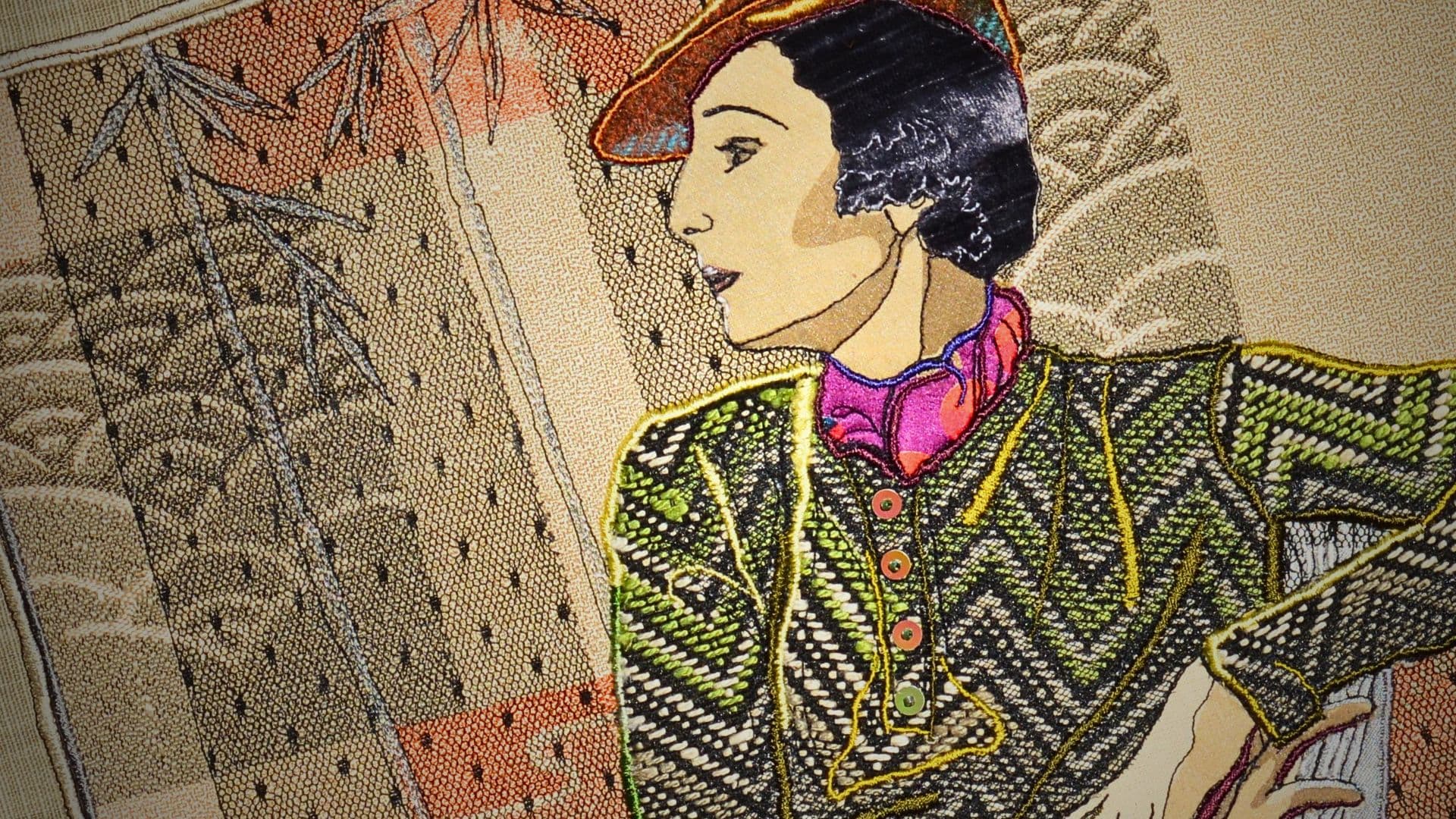
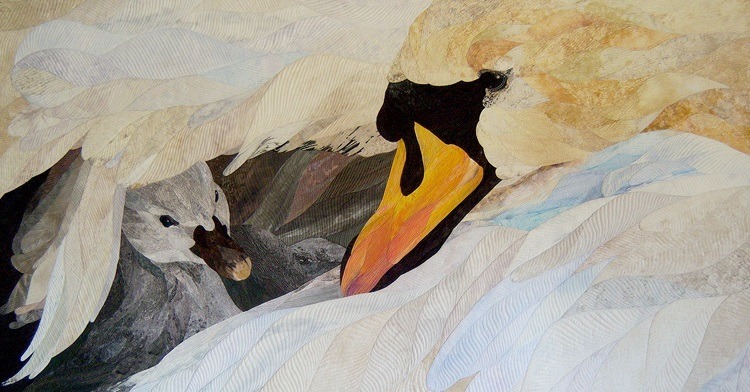
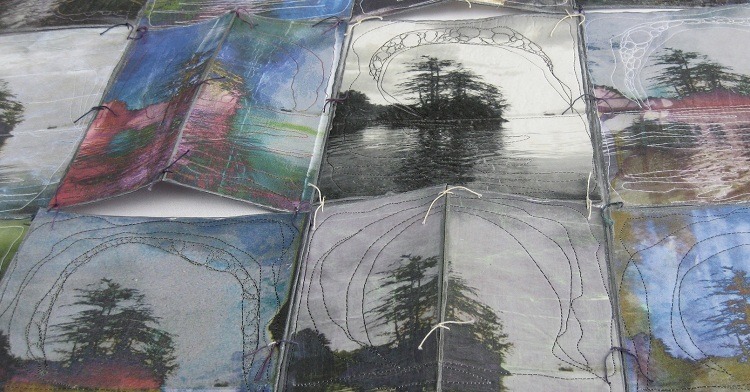
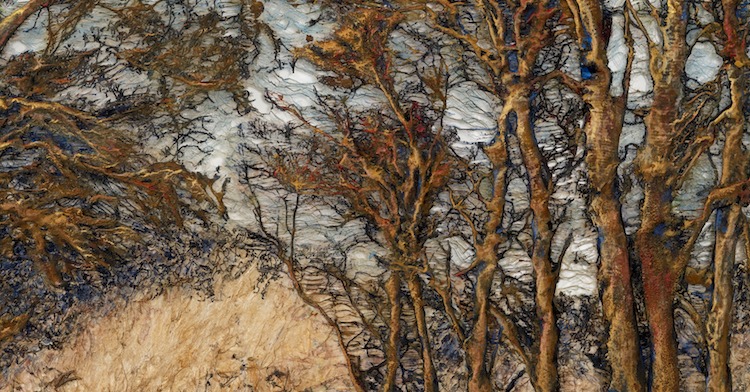
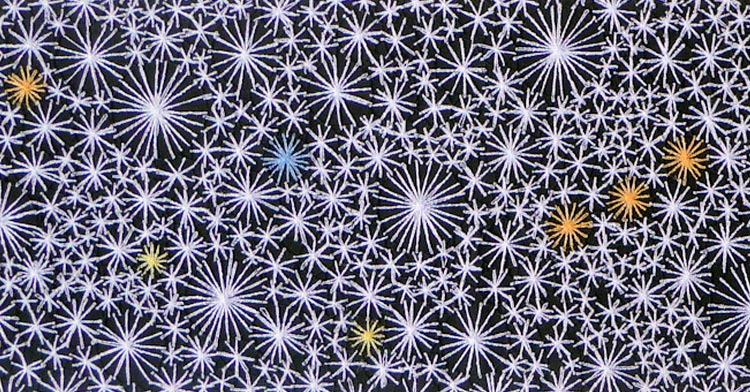
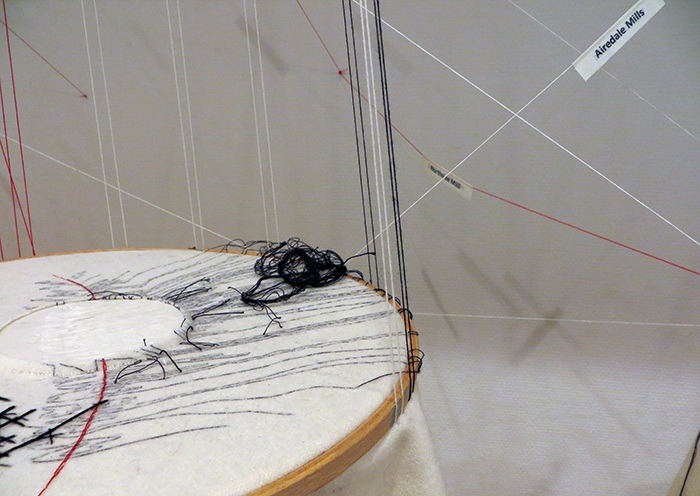
32 comments
manish
good knowledge
Sarah
Just stumbled, somewhat late, across your article and it really spoke to me. After suffering from debilitating anxiety for some years but putting the work in to try and recover suddenly the world is pushing opportunities my way. I have been commissioned to write my first ever piece and your words validate my thoughts and give me confidence to push on.
Charlotte
Thank you so much for sharing this—I’m truly touched that the article resonated with you. Congratulations on your first commission! That’s such an exciting milestone and a testament to your perseverance and hard work. It’s inspiring to hear how you’ve been turning things around and embracing the opportunities coming your way.
Trust in your abilities, and keep pushing forward. You’ve already shown so much strength, and I’m sure this is just the beginning of a wonderful creative journey. Wishing you all the best as you work on your piece—you’ve got this! 🌟 Stitch club team!!
Kathy
This community helped me to find my “safe space” in textile art. While I don’t see myself as an artist, I do find my creative nature explodes in textile arts. Thank-you.
Kim Hurd
Such a great article! I’ve been learning much about neurological disorders in my functional nutrition courses and you are so spot on about the amazing benefits that a stitching practice has on our mental health.
Barbara Richards
As a practising artist and since 1995 a fibre artist I can fully vouch everything you two brothers put for ward in your article. A whole lot of us are going through stress momento for a year now and if we didn’t find a release from the physical stomach cramps and mental tension that the stress hormone cortisolo creates, we would soon be psychiatric cases in a short time.
Therefore for everyone a process which really works to ease this tension which accelerates like a bushfire, is to find any kind of creative outlet. We fibre/stitch artists have fabric, yarn, thread and colour but others might have different routes that develop into a passion.
Maregot
It is all true, the healing power of stitch, am so grateful for it in my own life since completing Sue’s course a couple of years ago. Aroha from Aotearoa (New Zealand)
carol
Thank you so very much for this article. I’ve just discovered this site and it answers a deep longing, especially now, to be creatively connected. I love the lizard, mouse, monkey images. I’ve recently discovered origami and have found the same benefits in that practice. My 94-year-old mother has recently discovered needle work to help her through being confined to bed. There seems to be a unifying essence in the practice of hand work that helps us heal and carry on!
Thank you for your words of healing and inspiration.
Heather Herbstreit
What a blessing, encouragement and inspiration this article is.
Thank you.
Alison
Your words touch my heart. On the first day of the COVID19 lockdown, a pair of house finches built a nest on the lamp post by my window. I had a birds eye view into the nest. I watched as they all hatched and fledged …except for one. His toe was caught on a twig and every time he tried to fly, he sat back down. Eventually he was the last one in the nest, but Mom and dad kept feeding him and tweeting encouragement. After days of this I decided to take action. Armed with a ladder and scissors I was going to set him free! When he saw my face close to the nest he took off like a bat out of hell! So, I decided to start an embroidery based on photos I had taken. I’ll try to attach a picture! I love your site!!
Louise
That’s a very heart-warming story, Alison. Birds are the best – did you know that they’re the descendants of dinosaurs, pretty much? My ambition piece would be to stitch one of Edward Lear’s parrot drawings. But since I’m still accidentally sewing stuff to my skirt, that’s going to have to wait.
I would LOVE to see a piece called “Surprised Finch”and hope that you’ll continue the series with “Dismayed Owl” and “Slightly Miffed Pheasant”. I envisage an exhibition of your work and I’ll be the first to buy a ticket!
I loved your story. Thank you.
Jacob Clark
You are very right, since embroidery very focuses us on a well-embroidered line. Therefore, you are let go of many thoughts when you start embroidering. In fact, my journey began with a thread of floss and I made bracelets for my entire family. It distracted me from not really interesting to me occupations – studies, haha. Therefore, I often made bracelets for the whole school and was very fond of it in my school years. Later, of course, I changed my direction a little, which my father did not really approve of, although in addition to sewing, I played soccer and was practically the best. I did not give up and anyway, when I was worried, I started to sew. Here is such a story of mine.
Louise
That’s so true, Jacob. When you’re stitching, there is only the present.
Michelle Thomasson
A wonderful reminder on how soothing and inspiring simple hand stitching can be. Love the line: “Anxiety can’t compete with attention” and with creativity that ‘attention’ is such a gentle competitor. Thank you Louise.
Louise
Thanks so much, Michelle, I’m so glad you liked the article.
Jane Dorsett
A wonderful paper. Combined with the challenges, talented people, and access to the Internet equals success!
Janet H.
Stitching has been my friend, confident, healer, savior for 36 years. What would I do instead?
dianaraytaylor@gmail.com
This community reached out to all of us who are feeling alone. Like hands and hearts reaching across troubled waters, building bridges saying Do not give up, make a stitch,then another, keep on trying. Then the candles of our souls goes from little flickers, catch the wind, and with your help and teaching, become steady flames.
Ivonne
I love that I can pick up and stitch,be absorbed in markmaking enjoying the journey of the line without clear end destination,thought come and go,to be part of a world community has been very special and to share this with my artist sister on the other side of the country has been fun, thank you all for sharing, caring and creating in these challenging times, stay well,stay safe
Belinda Oakman
I have just read through all these posts and found them very interesting.Does it only apply to hand stitching,& not machine stitching or hand knitting?
Louise
Hi Belinda,
Great question! From what I’ve researched, I believe that any activity that requires focus and concentration, and perhaps has some kind of rhythm or repetition, can create a meditative state which is good for our brain. So if knitting and machine stitching do that for you, then yes!
Jana Jopson
Louise, this was an intriguing and informative article. It brought to mind a description I once read of women spinning yarn together and falling into a sort of group “trance” of calm. Needlework of some kind use to be taught in elementary schools. Needle and thread have the power to change lives. Thank you!
Louise
Hello Jana,
I totally agree! Stitching can and does change lives. I think in a group setting, stitching can be very like freestyle drumming circle – you go off into a rhythm of your own, but are still connected to the group. I don’t think I’d try to stitch and drum at the same time, though – that’s asking for trouble.
Marilyn Clulow
I just want to say that both you and your brother deserve the deepest respect and honour for creating what you have created, most of all for honouring your mother as a mother and an amazing artist.You have created a forum to teach , inspire and to honour artists and their work in every possible way.You have opened up our eyes and your creating the 7 week challenge for anyone who chose to participate in what ever way they could was absolutely genius, absolutely brilliant.It gave us a focus away from the tsunami of chaos that has hit the world.You have pulled many of us away from the abyss. Thank you is almost too small a world. I hope you and your brother go down as unsung heroes of this pandemic , you have been front line workers not dealing with the physical but just as important you have helped heal many on a mental , emotional and spiritual level. We all owe you a debt of gratitude! Thank You ❤️
Barbara Scott
Thanks for putting together a venue for our tribe.
Beth
This article will help me save my sanity.
Thanks very much.
Gloria Spiridigloizzi
Thank you for this inspiring article. Its so true . I have been slow stitching since I was a child in many different ways . It has helped me in good and troubling times.
Idalina Da Silva
Thank you so much for sharing this beautiful story, showing that we humans have the power to conquer all obstacles. A very caring and inspiring story in the midst of a global pandemic.
Be safe and take good care.
Best regards
Idalina
kathy
Louise,
This is a very beautiful and inspiring article. Thank you very much!
Louise
Hi Kathy
Thanks so much for your comment. The stories from the Stitch Community were so inspiring that it was such a pleasure to write.
Linda Foley
You’ve managed to say everything that I I feel about this wonderful experience, but I struggle to find the words
Thankyou for expressing my thoughts and feelings so well.